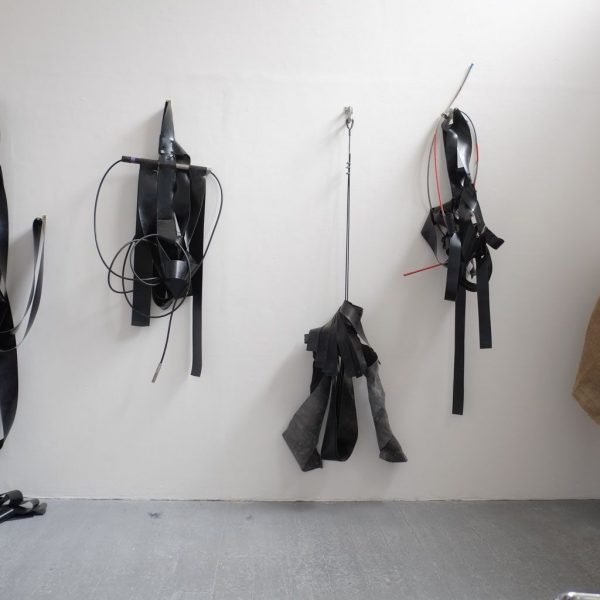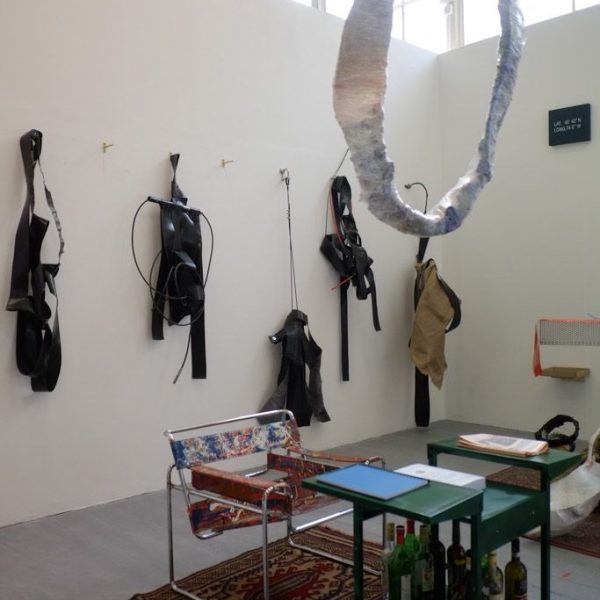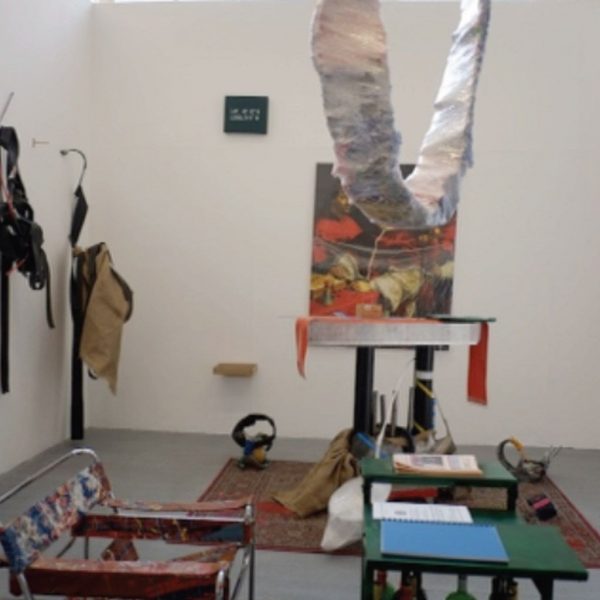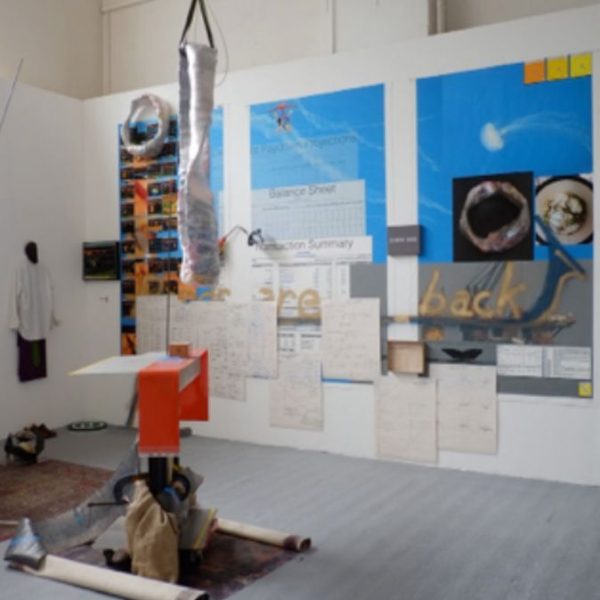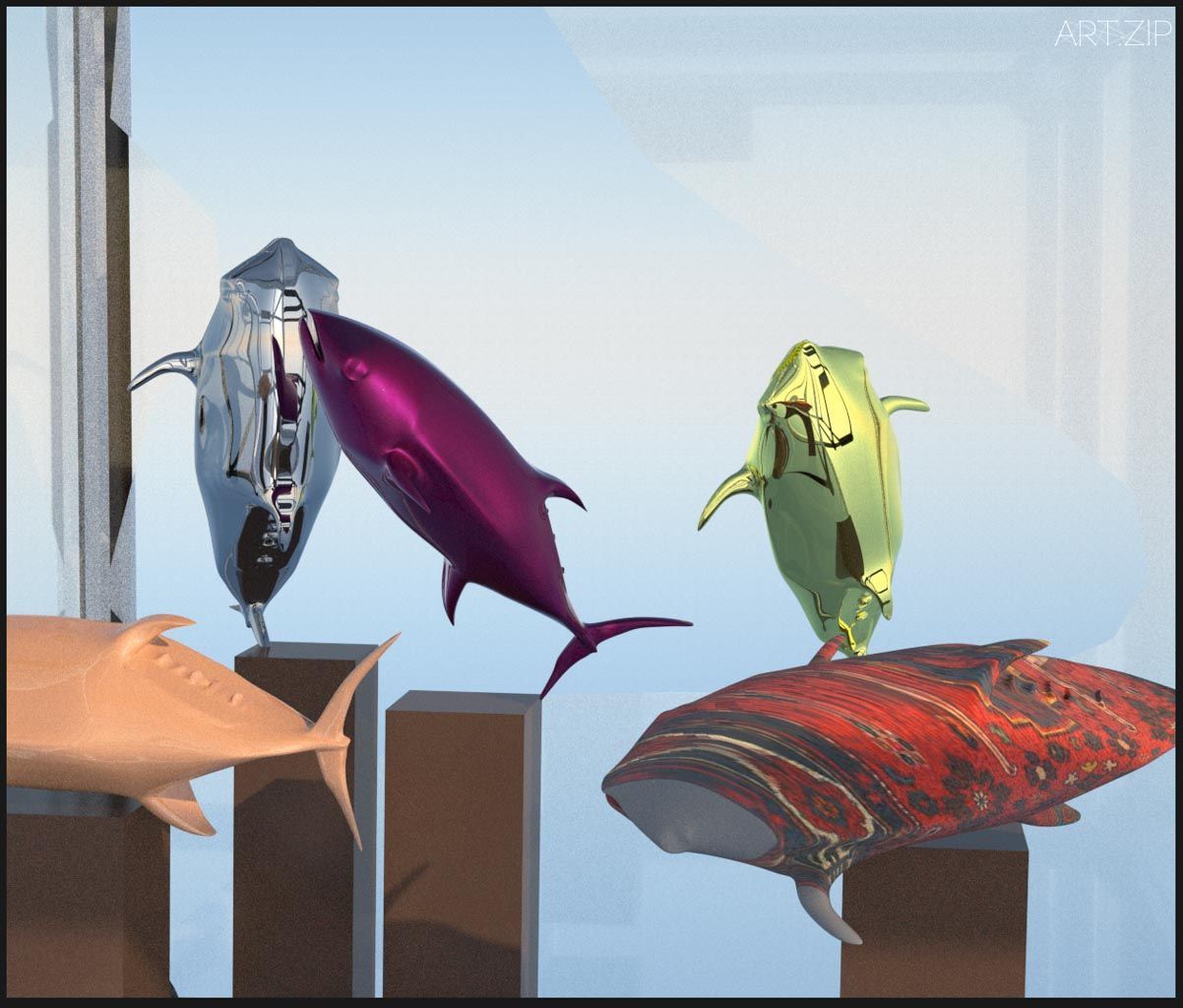
Text and Images by 撰文 x U. Kanad Chakrabarti 尤.卡納德·查克拉巴蒂
Translated by 翻譯 x Jay, Chun-Chieh Lai 賴駿杰 Michelle Yu 余小悅
My studio is a place of clashes: imperfection and chaos in close proximity to the comparatively ethereal praxis that is digital video-editing. The resistance of physical materials gives rise to surprises, accidents, mistakes. In a different way, digital processes also present obstacles: corruptions in image data, or glitches that arise when pure data meets display medium – whether out-of-gamut colours on a web browser or a leaky cartridge messing up an otherwise ‘perfect’ inkjet print. For instance, in a recent video, I used 3-D CGI, digital effects, electronic music, all that trendiness, but as I put it together I realised that the artefacts – dust, scratches, printing errors – in my original black-and-white analogue photographs from Sicily resonated the most in this world of instant, perfect images, endlessly reproduced on screen after screen after screen.
我的工作室是充滿碰撞的地方:不完美的、混亂的、相對飄渺的實踐,即數碼視頻剪輯。對物理材料的抗拒反而造就了驚喜、意外和失誤。數碼處理也會出現故障,只是換了另一種方式,如:影像檔案的損毀,又或是當純數據遇上展示媒介所產生的影像干擾或失靈——要麽是瀏覽器無法達到色域範圍,要麼墨水滲漏所造成的打印失誤。舉個例子,在我的一個近期視頻作品中,我使用了3D CGI,數碼特效,電子音樂等所有當前流行的方式,但當我把這些都揉合在一起的時候,我才發現,那些過去在西西里島拍攝的傳統黑白相片的人造痕跡(塵粒、刮痕與沖印失誤)才真正回應了如今泛濫的即時生成的完美影像且無止盡地在一個接一個屏幕中複製及顯現。

At a deeper level, I also identify the studio with other sites close to my artistic vision: souk, pescheria, trading desk. In all these places, things of value, whether use or exchange, are bought and sold, with much noise and colour in the bargain. A vast hall filled with Excel spreadsheets and flashing lights, an investment bank’s trading floor, not unlike Billingsgate or Tsukiji, was a charged site: smelling of sweat and cigarettes, filthy, crowded with irascible characters who barked into phones, the long cords of which snaked around like squid-ink spaghetti. Yet this is no longer: in the 1990s, one hollered trade orders down to the Chicago Mercantile Exchange, where guys in bright jackets would buy and sell live hogs, dead cows, as well as the U.S. 30-year ‘long bond’. A trade order used to be scribbled on paper ‘blotters’, and passed to assistants to be typed into a computer. Today, most financial markets are entirely electronic, while bitcoin and blockchain apparently will revolutionise the essence of money. Even the fish-market has changed: my fishmonger now has an app that tracks his suppliers at sea and the soon-to-be-landed catch. Yet, as automation becomes ubiquitous, the individuals in the markets remain corporeal and mortal. After all, the bit must still touch the stuff of everyday life: steel, plastic, concrete, carpet, amber, rice.
更深入來說,我覺得我的工作室和其他場所——露天市場、魚市場、交易所——是聯繫在一起的,只是更接近我的藝術想法。在這些地方,無論是具有使用價值還是交換價值的物品均能涉入買賣,在噪音與色彩中斡旋。一個充滿Excel表格與閃光燈的投資銀行的交易大廳,與倫敦的比林斯蓋特海鮮市場或東京的築地漁市場沒什麼兩樣,也是氣氛緊張的地方:空氣中夾雜著汗水和煙草的味道,與正對著電話——電話線蜿蜒蜷繞如墨魚麵般——焦躁咆哮的人擠在一塊兒。然而現在與當年大不一樣:在90年代,人們吆喝著交易員來到芝加哥商業交易所,在那兒穿著明亮夾克的人正在處理活體豬隻、屠宰牛隻與美國三十年期“長期債券”等交易。交易的指令過去通常被寫在“吸墨紙”上,並且交由助手輸入電腦。今日,多數的金融市場已完全電子化,而比特幣(Bitcoin)與“區塊鏈(Blockchain)”等顯然帶來了金錢的革命性轉變。即使是漁市場也已改變:我相熟的魚販現在也用手機應用程式追蹤其海上的供應商,並即時知道哪些即將臨岸的漁獲。然而,當自動化無所不在時,市場中的每個個體仍然是肉身且有限的。畢竟,比特最終還是會接觸現實生活:鋼鐵、塑料、水泥、地毯、琥珀,米。
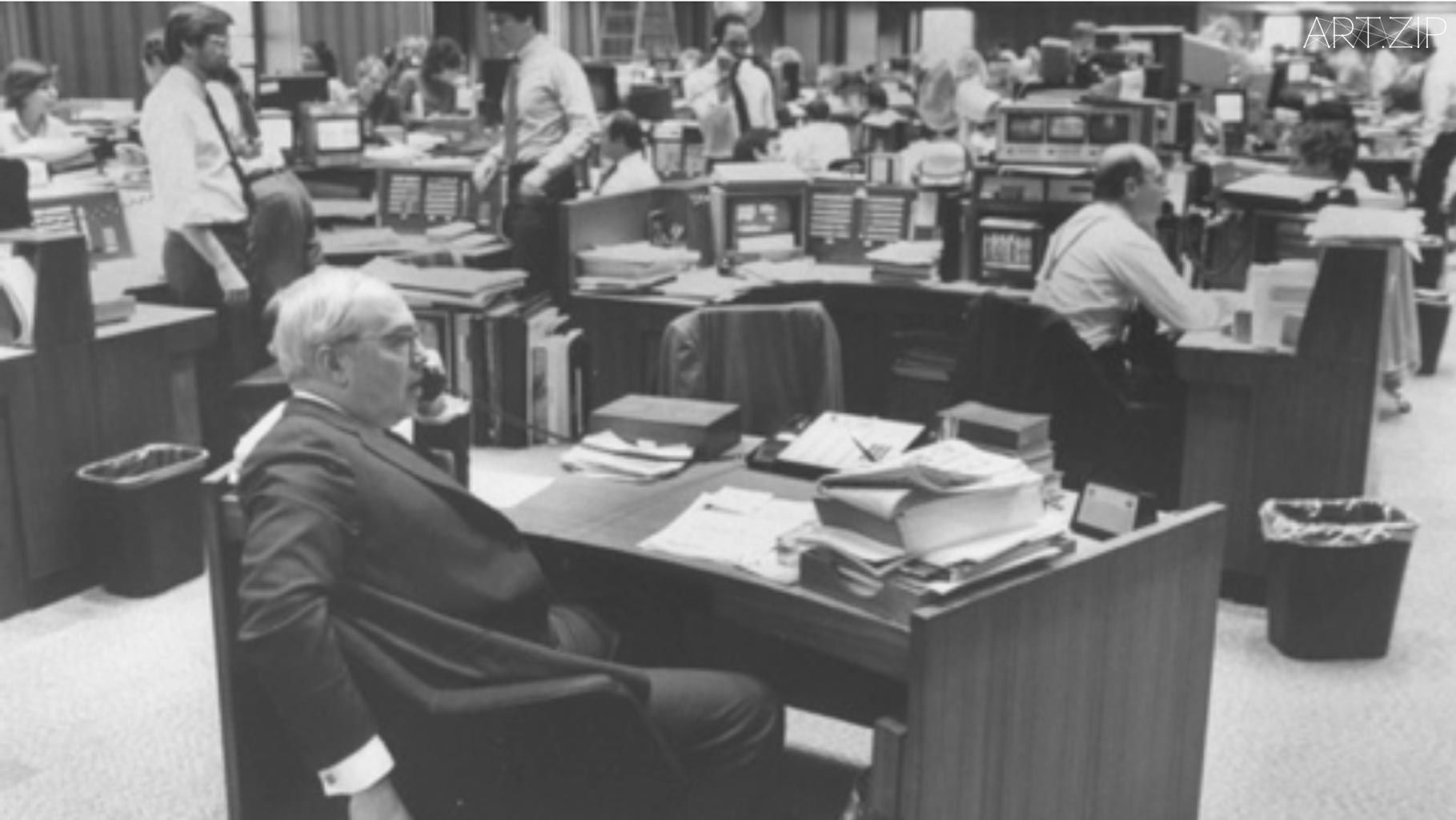
Derivatives & Integrals
衍生與整合
The dichotomy above, of physical studio and digital desk, of accident versus planning, leads me to another opposition. In both art and the market, I see creation as arising from a continual process of taking derivatives and integrating. What do I mean by that? Derivative is closely related to the French difference, and both terms refer to an activity of perturbing a complex and reflexive system, to find out how it reacts. By making hundreds of such perturbations, and noting the results, one forms an overall view, a map, of the system’s behaviour. Similarly, in the studio, the artist, faced with his/her unknowable creative process, is constantly trying things, often without a conscious destination or objective. Add a bit of paint here, take some away there, and most importantly, look at the result – and get others to look at it. This is a game of educated guesswork, guided mostly by intuition accumulated over the years.
上述的二分對立,關於實體工作室與數碼桌面,關於意外與計畫之間的對比,將我引向另一種對立。在藝術與市場兩者中,我把創造視作一種持續地不斷派生與整合的過程。我指的是什麼?“派生”相當接近法文中的“衍異”(difference, 譯做衍異),這兩詞皆指一個紊亂複雜且具反思性的活動,意圖理解這套系統如何作出反應。藉由數百次這樣的擾動並記取結果,而形成一套關於這套系統行為的全景圖和地圖。類似地,在工作室中,當藝術家面對他或她未知的創作過程,他們經常是不帶有明確意圖與目標的、持續地進行嘗試和實踐。這裡加一些顏料,那邊去掉一些,最重要的是“觀看”結果如何,還有讓別人“觀看”。這是一場知識份子的猜測遊戲,由多年來積累的直覺所引導。
At the other analogical extreme lies integration. Artists, like market traders, have to bring together a vast amount of historical and practical information, understand the context of that information, and apply it to present circumstances. Then do it again. And again, for as long as one can. For artists, this amounts to knowledge of materials, processes, art history, personal experience and the world-outside-art. This process of assimilation is fundamental to forming an aesthetic judgement. It certainly isn’t the only way of art-making, but it seems to me to be particularly applicable to contemporary, politically-engaged art. Even within, or perhaps especially within, painting, one must accumulate, process, and channel 2,000+ years of art history….look at someone like Anselm Kiefer: here’s a guy pulling in the entire history of Germany, but why stop there, he’s picking up Mesopotamia via Judaism, smashing that together with studio processes that are archaic, foundational, and intensely physical. Nothing 3-D printed, no Instagram, no UV-on-Mylar…
對比的另一頭則是整合。藝術家,與市場交易員的工作性質相似,必須將一整串與歷史及實際相關的信息結合在一起,理清資料的脈絡,再應用到當下。週而復始,盡可能地一再嘗試。對藝術家而言,這些“信息”就等同於其對於材料、過程、藝術史、個人經驗與藝術世界之外的總體知識。這些知識的吸收過程對於形塑美學判斷是重要的。它確實不是藝術創作的唯一方式,但我認為對於政治介入的當代藝術實踐特別奏效。即使是,或者說特別是繪畫領域,藝術家必須積累、發展、並梳理超過兩千年以上的藝術史……看看安塞姆‧基弗(Anselm Kiefer):這傢伙把整個德國歷史搬出來,但為什麼還停留在那兒?他正在透過猶太教視角以拾取美索不達米亞文化,將這些古老的、基本的與極度物質的工作室實踐碰撞揉合在一起。他的實踐沒有3D打印,沒有Instagram,也沒有UV膠片印刷……
Kiefer is, for me, notable for an ability to create a world within his paintings. Artists produce or appropriate a set of symbols, practices, and movements, imbuing them with an internal relationship, a coherence. Note, I don’t say ‘consistency’: some of the most interesting artists have work that is dramatically diverse in appearance, but somehow when they’re done, people think it hangs together. In the most exciting cases, these freshly-created worlds, like the mythical Greek serpent Ouroboros, turn on themselves, and re-define the very category of ‘art’.
對我來說,基弗讓人矚目的原因是他能夠在他的畫作裡創造一個世界。藝術家創作或挪用一系列符號、實踐、運動,並注入一種內在關聯和連貫性(coherence)。注意,我說的不是“一致性(consistency)”:一些非常有趣的藝術家作品有著各種表面上看起來都不相稱的元素,但是當成品展示出來的時候,人們並不會覺得違和。那些最激動人心的案例裡,我們目睹了這些新型態世界,猶如希臘神話裡的銜尾蛇,自我毀滅的同時又自我重生,一再重新定義“藝術“。
On Simulation
論模擬仿真
A particular species of world-making that is relevant to my own practice is the computer simulation. I’m dating myself here, but I remember getting really excited about simulating, on an first-generation Apple Macintosh, Ronald Reagan’s ‘Star Wars’ missile-defence system – a network of satellites in the sky that would shoot down Soviet ICBMs before they hit the U.S. Neither my simulation nor Star Wars itself ever got built: the USSR was already toast, capitalism had triumphed – and the 26-year bull market in art and debt really hit its stride.
與我自身實踐有關的一種特殊的世界創建方式是電腦仿真。有點不太確定年份,但我仍記得當時第一代蘋果電腦所演繹的關於羅納德·里根(Ronald Reagan)的《星球大戰(Star Wars)》裡的飛彈防禦系統——一套防禦蘇維埃洲際彈道飛彈襲擊美國本土的衛星網絡系統,我對於那擬仿手法極為興奮。無論是我的擬仿或星際戰爭系統從未曾真正實現:因為蘇維埃社會主義共和國聯盟已經解體,而資本主義則全面勝利。甚且,藝術與借貸系統中長達26年之久的牛市越走越順利。
At university in the 1990s, I started looking at how to visualise financial data comprising millions of data points, using high-speed computer graphics – then just becoming available in academia and Wall Street. This was still on Sun SPARCstations running on the U.S. Defense Department’s ARPANET, now recognised as the fore-runner of the Web. We used something called ‘Monte-Carlo’ simulation, a glamorous name suggesting strapless gowns and baccarat tables, but really just a programme that would calculate how esoteric financial derivatives would behave under thousands of different hypothetical scenarios, so-called ‘states of the world’. One adds up all the possible ways the future could unfold, takes an average of the whole thing, and gets an estimate of what the present moment might be worth. Conceptually, and procedurally, this is an echo of the integration I mentioned earlier.
90年代當我在大學時,我開始關注如何使用高速處理的電腦圖繪運作系統將那些濃縮了數以萬計的數據之財金檔案視覺化,它隨即成為在學術界與華爾街中普遍被使用的技術。當時美國國防部的高等研究計劃署網路(阿帕網)仍仰賴昇陽公司所製造的多工處理器,即現在所知的互聯網先驅。我們使用某種被稱為「蒙地卡羅」模擬程式,其華麗的名稱暗指露肩禮服與百家樂賭桌,但實際上只是一個運算程式,計算複雜的金融衍生產品如何在數以千計的假說場景中運轉,也就是所謂的「世界的動向」。人們合計了所有未來的可能性,計算出平均值,進而評估當前的價值。觀念上,以及程序上,都呼應了我在之前提起的整合這一概念。
In my last major programming project, in 2009, I wrote a ray-tracer from scratch. Ray-tracing is critical in digital cinema, video games, and computer vision. As the term implies, this involves following each possible ray of light from lamp to object to camera, then averaging together all the light-beams to render a scene. From a technical perspective, it is all about understanding materials: how metal, paper, fabric, or blood reflect, refract, and transmit light; what the nature of light itself is; where shadows come from. Yet, are these not the fundamental pre-occupations of still-life painting? What Chardin and Morandi did with eye and hand, we now do in silicon: as in markets, so in painting, digital supersedes analogue. Yet I suspect something is thereby lost…
2009年,我有一個重大的編程項目,我編寫了光束追蹤程式。光束追蹤在數碼影院、電玩與電腦等發展中極其關鍵。顧名思義,它追蹤每道發自燈源至物件乃至攝像機的可能光束,然後均化所有光束而呈現一個場景。從技術的角度來看,重要的是理解材料:金屬、紙張、織物或血液如何反射、折射與投射光;光的本質是什麼;影子從何而來。然而,難道這些對於靜物繪畫就不重要嗎?當年兩位靜物大師夏爾丹(Chardin)與莫蘭迪(Morandi)以其眼與手所做的事,也就是我們現在用硅所做的:正如同在市場系統一般,在繪畫中也是,數位取代了類比技術。然而,我猜想某些事物卻因此而丟失了……
Anyway, what’s interesting to me about the examples above is this idea that one can model the ‘real’ world of external objects and phenomena. Curiously, the contemporary philosopher Nick Bostrom thinks about the theoretical possibility that all of us, collectively, are part of a giant universe-scale simulation created by our distant descendants, a so-called ‘post-human’ civilisation.
無論如何,關於上述所提的例子中,對我而言有趣的是,人們能夠塑造出外部物件與現象的「真實」世界。令人好奇的是,當代哲學家尼克·博斯特羅姆(Nick Bostrom)因此想出了一種可能——所有的我們,都是由我們遙遠的後裔所製造的如宇宙般浩瀚的擬像中的一部分,所謂的“後人類”文明。
The Collector’s World
藏家的世界
The notion of a created-world was something I explored in my installation Derivative Work, a pun connecting the financial term with the cheaply-copied artwork. I was thinking of a hedge-fund manager’s office, perhaps situated above the Nobu on Berkeley Square, whose responsibilities are sufficiently light to give him time to collect a great deal of art. Thus I ordered in copies of paintings by Raphael and On Kawara, and made loose re-interpretations of early Richard Serra and late Franz West. On the wall opposite a faux Marcel Breuer chair were 4-metre-high screenshots of desktops and spreadsheets, while online, one could visit the fictionalised website of the hedge fund (www.iodcapital.ch).
關於創建世界這一觀點,在我的《衍生作品(Derivative Work)》裝置中曾被探究過。作品名稱是一道雙關語,既是金融用語,又指向劣質藝術仿冒品。我當時想到了一個操作對沖基金的經理辦公室,或許就座落於伯克利廣場(Berkeley Square)的Nobu日本餐廳之上,充足的采光足以讓他有時間去收集好的藝術品。於是,我訂製了拉菲爾(Raphael)與河原溫(On Kawara)的仿製畫作,並且粗略製作了理查·塞拉(Richard Serra)早期與弗朗茲·韋斯特(Franz West)晚期的藝術品。在一張仿馬歇爾·布魯耶(Marcel Breuer)椅子對面的牆上掛上足有四米高的電腦截屏圖片,都是電腦桌面與計算表格什麼的,觀者也可以在線上訪問這個對沖基金的虛構網站(www.iodcapital.ch)。

There is lots of boring theory about institutional critique, appropriation art, etc. I could bring to bear here, but really the work, for me, went back to my initial point in this essay: how do rough, painterly, corporeal things come together with perfect, corporate, digital images?
現在有許多關於體制批判、挪用藝術等的無聊理論。我可以在這裡羅列許多,但對我而言,回到這文章的最初的問題:那些粗糙的、手繪的、實體的物品如何能與完美的、整合的、數位的影像結合?
Did it work? I have no idea – but what was interesting was how viewers reacted – some basically threw up and walked out. Many however spent more than half an hour in the installation, thumbing through documents, watching the video, going up close to the blown-up screens. I could time it because I was also doing a performance in there – dressed in a suit, writing banking formulas, commodity prices, etc. on a big flip-chart. I chatted to some of the visitors, about the financial crisis, the carpets of Isfahan, and the nauseating smell of rubber from my Serra-derivatives. On two mornings when I came into the space, I would find people had written things on the flip-chart – judging by what they wrote and the cider cans, they had a small party. To me, this defined the installation as a success – viewers, some and others repelled, found a space with which they could actively engage.
這樣的結合能夠成功嗎?我不知道。但有趣的是觀者的回應,有些人根本對它嗤之以鼻,然而也有許多人花了超過半小時在這個裝置上,翻閱文件、觀看視頻,並且走近細看這些放大了的屏幕截圖。我之所以可以計算時間,是因為我也在現場進行行為表演——西裝革履的我在一塊大型白板上書寫各種銀行公式、商品價格等等。我甚至和觀眾聊金融危機、伊斯法罕地毯,以及從我的塞拉仿冒作品傳來的那股令人噁心的橡膠味等等。我曾經有兩個早晨發現展覽空間發生了變化,根據白板上的“留言”和地上的蘋果酒罐,我猜觀眾應該在這裡辦了一個小派對。對我來說,這意味著我的藝術裝置頗為成功,就連那些不喜歡我的作品的觀眾都在這裡找到了一個得以積極參與介入的空間。
Find Out More about U. Kanad Chakrabarti
http://subdir.iodcapital.ch

